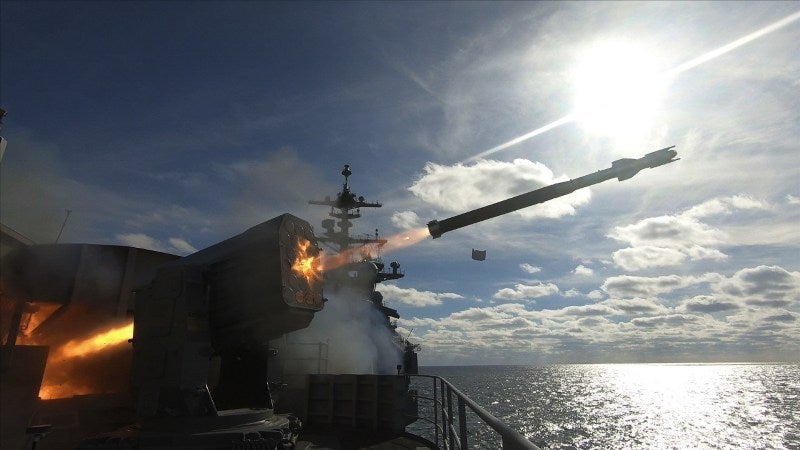
Raytheon’s rolling airframe missile (RAM) Block 2A short-range, surface-to-air missile has undergone a series of guided flight tests with the US Navy ahead of its planned delivery.
Tests were performed at the Naval Air Warfare Center in China Lake, California, and from the self-defence test ship off the state’s southern coast.

Discover B2B Marketing That Performs
Combine business intelligence and editorial excellence to reach engaged professionals across 36 leading media platforms.
The RAM is an advanced ship self-defence weapon designed to protect ships of all sizes.
Jointly developed by the US and Germany, the guided missile system is a supersonic, lightweight, quick-reaction, ‘fire-and-forget’ weapon. It is currently deployed on more than 165 ships in 11 countries.
Raytheon continually improves RAM to keep it ahead of evolving threats, including anti-ship missiles, helicopters, aircraft, and surface craft.
The company also provided upgraded software to improve guidance and enhance the capability to defeat threats.

US Tariffs are shifting - will you react or anticipate?
Don’t let policy changes catch you off guard. Stay proactive with real-time data and expert analysis.
By GlobalDataThe navy is expected to receive the RAM Block 2A missile by year-end.
Raytheon produces RAM in cooperation with German companies LFK, DBD, and RAMSYS. The companies in the programme share development, production and maintenance costs.
RAM Block 2A features a larger rocket motor, advanced control section and an enhanced RF receiver.
With the latest enhancements, the missile is two and a half times more manoeuvrable and has one and a half times the effective intercept range.
RAM Block 2 can be launched from the 21 round RAM guided missile launch system or from the SeaRAM standalone self-defence solution.





